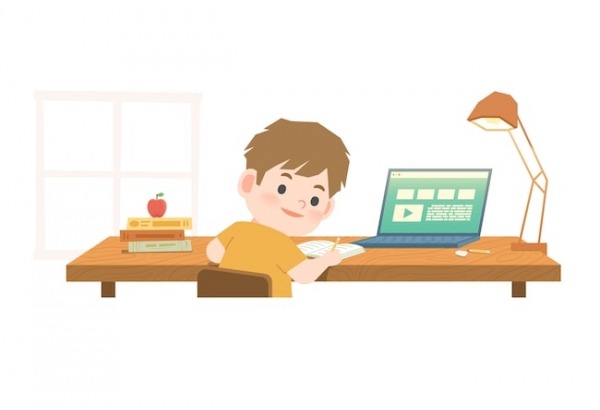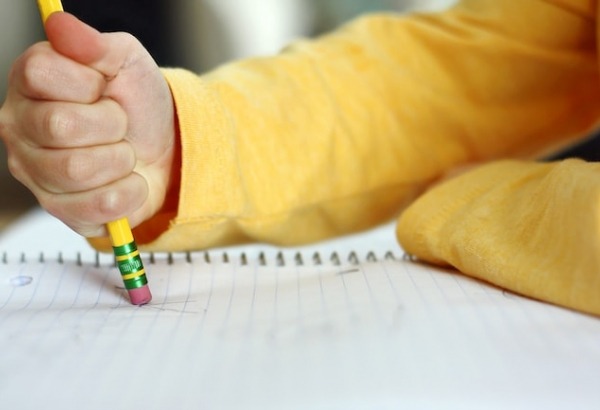Accommodations for students with dyslexia

A guest post by Cigdem Knebel.
Many dyslexic students experience challenges when it comes to language skills development, including reading, writing and spelling. Dyslexia is often referred to as a “learning difficulty” because dyslexia makes it harder for these individuals to reach their full potential in a traditional school environment.
Nonetheless, phonics-based, multi-sensory and evidence-based reading instruction has been shown to improve the language skills of dyslexic children. So while dyslexia may still be classed as a learning difficulty, the terminology “learning difference” may be more appropriate. And fortunately, with the right classroom accommodations, most students can achieve academic success alongside their peers.
Dyslexia in the classroom
Dyslexia symptoms can vary from one student to another and each student may require individualized accommodations. There are, however, some common practices that will help students with dyslexia to succeed in the school environment while not interfering with the general flow of the classroom.
Considering the fact that 15-20% of the population in the US may struggle with a language-based learning disability, working some of these accommodations into more general teaching practice could improve the quality of education for more students and enhance opportunities for learning all around.
What are accommodations?
Accommodations are changes in the way an educator facilitates a student’s learning. An accommodation could involve the delivery of a certain kind of classroom instruction or the implementation of a targeted lesson plan. Accommodations can be delivered individually or may be general adjustments to the classroom environment. A dyslexic student with writing difficulties, for example, may be allowed to submit assignments orally.
Accommodations in a school setting may include the ways in which educational material is organized, presented and consumed, how knowledge is tested, and how performance is reviewed. They can also be modifications to task instructions, additional materials or even supplementary technology. Sometimes accommodations can take the form of a new skill or set of skills that are taught and practiced in the classroom.
For students with learning difficulties, having access to accommodations is essential. School can be an uphill battle but the right adjustments can prevent the kind of demotivating and discouraging experiences that lead to low-confidence and low self-esteem.
Each and every child, regardless of his or her learning style, deserves access to educators who understand their strengths and weaknesses, empathize with their frustrations, believe in them and do the best they can to meet their needs.
Read more about classroom accommodations for dyspraxia, dysgraphia, ADHD, ADD, slow-processing, and autism spectrum disorder in these articles.

General classroom accommodations
- Provide clear task instructions. This modification benefits all students in the classroom and is easy to implement. Dyslexia often affects the ability to process, prioritize and remember long lists of instructions. When instructions are given in paragraph form they are even more difficult to follow and remember. Underlining or highlighting the significant parts can help. It may also be useful to present instructions as numbered steps or bullet points. Have students go over task instructions as a class and individually. If they are printed, read them aloud and vice-versa for directions that are spoken. It can sometimes be useful for children to repeat the instructions back to the teacher, if possible, to check they have understood them correctly.
- Include a range of visual cues with written material. Visual cues such as pictures, color-coding and numbered checklists help students focus their attention and break up blocks of text that can be intimidating and cause them to avoid reading. This can make material more accessible for dyslexic students and any students who are visual learners.
- Ensure optimal classroom seating arrangements. Students with learning difficulties may benefit from sitting in an area where they can work independently and without distraction. They might also benefit from sitting close to the teacher or board during group presentations. This can help students who struggle with attention issues too. Take care that a seating plan does not call obvious attention to an individual. Having a teacher announce that they are moving a child’s seat during class can cause students with specific learning difficulties to feel embarrassed in front of their peers.
- Create a safe and judgment free classroom. It's always a good idea to teach students that there is more than one way to approach learning and it’s important to respect each other’s differences. This will help foster an environment of understanding in which students feel comfortable taking risks and fully engaging in the learning process. It also enables students with dyslexia to build grit and resilience and develop a positive sense of self-worth.
- Involve physical movement in the school day. Just as it's a good idea to cater to visual learners, it helps to bring a kinesthetic element into the classroom too. During the school day, students might be given the opportunity for brief activity breaks. This is particularly helpful for dyslexic students. You could ask them to get up and sharpen their pencil, go for a drink at the water bubbler, or do a quick classroom errand to help the teacher.
- Avoid singling students out to read in front of the class. Reading out loud requires strong decoding skills and can be quite difficult for students with dyslexia. It's important to be aware of a dyslexic student’s anxiety when it comes to reading and not force them to read, write or spell in front of their peers. You might only call on them if they volunteer. If a student is required to read aloud, provide plenty of opportunities for him or her to preview and practice with the material beforehand.
- Reduce homework. For dyslexic students, reducing homework can be beneficial when possible. You can try just assigning odd numbered questions, or only those that are critical for mastering the material. In this way students still receive the benefits of repetition without feeling overwhelmed.
- Modify assessment conditions. Extend time limits on tests, quizzes and in-class assignments or remove them if you can. For students with dyslexia (dyspraxia and dysgraphia, too) handwriting can be slow, labored and time consuming. It is also a cognitively taxing process that requires focus and attention. That's why many students with dyslexia can benefit from taking tests in an environment that lacks distractions, such as a separate room or a quiet space like the library, where they also have more time.
- Praise effort over performance. It's helpful to recognize the amount of effort a student puts into their work, in addition to the final outcome. This can help encourage a love of learning. Students with dyslexia are often hard workers even though the results of their finished work may not meet a teacher’s expectations. Keep in mind that they are often trying much harder than the rest of the class to understand and master the material. This can be cognitively overloading and exhausting for them.
Accommodations to improve reading and writing
Take a multi-sensory approach to language training.
Students with dyslexia are often right brain dominant and use different reading patterns. By connecting visual, auditory, and kinesthetic cues to a concept, multiple areas of the brain are activated. These new connections strengthen the left-side of the brain and help them improve their ability to remember information. Many progressive schools are implementing phonics-based multi-sensory language programs such as Touch-type Read and Spell or the Wilson Language Program. These evidence-based programs are widely accepted as successful methods to teach reading, spelling, and writing to students with dyslexia and other learning differences.
Try out audio books in the classroom.
Audiobooks are a great tool for students with reading difficulties. They can be used for both educational and leisure reading. They not only cut down on the time needed to get through new material, but also improve comprehension skills. This is particularly true if the student is an auditory learner.
Grade content vs spelling.
Unless you are grading spelling on a vocabulary quiz, try to avoid covering a student’s work with red-pen for spelling mistakes. This can be discouraging and demotivating. When possible assignments and tests should be graded based on the content of the thoughts and work vs. punctuation, spelling, and the neatness of a child’s handwriting.
Allow computer-based spell checks.
The old-school way of checking spelling by looking up words in the dictionary can be a tiring job for a dyslexic student. Allow students to use autocorrect and spell check to correct the spelling of their work. These are tools they will have access to when they are older and it will not negatively impact their spelling abilities to start using them from an early age. On the contrary, it can bring about enhanced noticing of the misspelled words.
Facilitate note-taking in the classroom.
Provide class notes, if possible, or pair students up with a note-taking buddy. Let them record the lesson or take photos of the board and the homework assignment. Allow students to share notes when appropriate.
Utilize alternative assessment methods.
Students with dyslexia learn best when they incorporate more of their senses—this involves seeing, listening, discussing and using their hands. If you can. allow them to be evaluated based on presentations instead of just written projects. You might say assignments can be in an audio or video format instead of just written essays. If the student has strong auditory skills, oral exams will give the teacher a better measure of a student’s actual knowledge of the topic.

Find the right reading materials.
Fostering a joy of reading is critical in building a child’s confidence. Teachers can nurture a love of reading for students who struggle with literacy skills by choosing books that are right for their level. They may be easier to decode and have greater concentrations of high frequency vocabulary while still providing age-appropriate and engaging narratives.
Provide access to assistive technologies.
Students with dyslexia often have difficulty transferring their thoughts and ideas into writing. Assistive technologies such as voice recognition software can provide much needed support and level the playing field. Unfortunately, many educators still see assistive technologies as a crutch that fosters avoidance of the student’s responsibility to complete written work manually. In this case, try introducing a new skill such as touch-typing. This can help improve writing skills and serve as an after-school activity that reinforces reading and spelling at the same time.
Learn more about touch-typing for dyslexics. You might also be interested in this article on improving writing skills in kids.
Additional things to consider
For parents looking for guidance in requesting accommodations, contact your local dyslexia association or join a group of parents of children with learning difficulties to find out what has worked for their children. Remember to start off by explaining your child’s individual learning style, including their strengths and weaknesses.
You may know what works best for your child, so don't be shy about sharing this with teachers. Document in writing and share with the school what you request and what is agreed upon. To ensure accommodations are made and results are achieved, track progress and follow up with necessary modifications.
Remember that each year you should review the accommodations your child is receiving in the classroom to make any necessary adjustments, taking into account developmental changes, progress, results from the previous year and any new skills or content they will be learning.
For learners who struggle with dyslexia
TTRS is a program designed to get children and adults with dyslexia touch-typing, with additional support for reading and spelling.
Meredith Cicerchia
TTRS has a solution for you
An award-winning, multi-sensory course that teaches typing, reading and spelling

How does TTRS work?
Developed in line with language and education research
Teaches typing using a multi-sensory approach
The course is modular in design and easy to navigate
Includes school and personal interest subjects
Positive feedback and positive reinforcement
Reporting features help you monitor usage and progress














